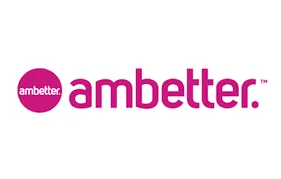







Opioid addiction has taken a severe toll on our society. Every day in the United States, hundreds of lives are lost because of these dangerous painkillers, and millions more are fighting the disease of opioid addiction. As a disorder of the mind and body, opioid addiction takes a severe physical and mental toll that is almost impossible to overcome without proper medical care in a rehab facility like Discovery Point Retreat. If you or a loved one are struggling with opioid addiction, get help today. Contact us at 855-306-8054.
Also known as narcotics, opioids are derived from the opium poppy plant, although they can also be created synthetically in a laboratory. They work by binding to specific receptors in the brain and blocking pain messages. Opioids may be legally prescribed by doctors to treat moderate-to-severe pain and they also come in the form of illegal street drugs.
Among the most dangerous of the opioids is fentanyl, a prescription drug that is 100 times stronger than morphine. Often used by drug dealers to doctor other illicit substances, this powerful medication is primarily responsible for the steep increase in fatal opioid overdoses.
Other types of opioids include:
The opioid crisis has swept across the U.S. in three distinct waves, according to a report by the Centers for Disease Control. The first started in the 1990s, spurred on by pharmaceutical companies assuring the public and healthcare practitioners that legal opioid pain relievers were safe and non-addictive. An increase in opioid overdose soon followed as the drugs actually behaved similarly to heroin, also an opioid used in medicine and available illicitly on the street.
Addiction among pain medication patients started to be more apparent. Then, the second wave of the opioid crisis started around 2010 when heroin became the primary target for people who became addicted to opioids through prescription drugs. The surge of available, cheap heroin increased the likelihood of its abuse.
The third wave of the crisis started in 2013, when the fentanyl first became readily available and began being used to enhance other street drugs. Between then and today, pharmaceutical companies have been accused of knowing about the risks of opioid pain relievers and failing to control their use in the general population. In 2021, CVS Health was among one of the companies sued for its role in the opioid crisis.
In 2019, it was believed that 50,000 people used heroin for the first time in that year. Around 1.6 million people abused prescription pain medications for the first time. Though around 14,480 people died from heroin overdoses that year, the Department of Health and Human Services found that more deaths were attributed to overdosing on prescription opioids, like fentanyl, with around 48,006 people losing their lives.
The opioid crisis has caused opioid abuse to be heavily monitored and studied in the United States. It was found by the 2019 National Survey on Drug Use and Health that around 10.1 million people 12 or older had misused opioids within the last 12 months. The majority of those cases involved prescription opioids (around 9.7%), but 745,000 cases did involve the use of heroin.
In the previous year, 2018, around two-thirds of all drug overdose deaths involved opioids. Several years earlier in 2016, opioid-related hospitalizations were 297 per 100,000 people in the population.
Opioid abuse has been a growing concern in the United States. As a result, naloxone is now available in most pharmacies and to those using prescription opioids or the general public. Perhaps not surprisingly, the total number of prescriptions for naloxone doubled between 2017 and 2018, according to the Centers for Disease Control and Prevention. Naloxone rapidly reverses the symptoms of an opioid overdose, which has helped reduce the number of opioid overdose deaths across the country.
Opioids are addictive in nature, so sustained use can easily lead to dependence or addiction. When you have a dependence on opioids, when you stop using them you may experience physical and psychological withdrawal symptoms such as vomiting, nausea, diarrhea, dilated pupils, watery eyes, insomnia, excessive yawning, abdominal cramping or tremors.
If you suspect that you or someone you know has an opioid addiction, here are some other signs:
The ongoing use of opioids can lead to taking larger doses to experience the same feelings, which can make you susceptible to a life-threatening overdose. Signs that someone may be overdosing on opioids are unresponsiveness, shallow breathing, no pulse, vomiting and constricted pupils.
There is a difference between someone being high versus overdosing. An overdose happens when a person has used too much of an opioid or drug for the body to handle. This is life-threatening and may be fatal.
An opioid overdose has a few common symptoms that you may recognize right away:
When someone is high, they may have slowed speech or appear sleepy, but an overdose will cause them to be unable to respond to stimulation and may produce a death rattle (deep snoring and gurgling). Breathing is relaxed when high, but an overdose makes it so the person may not breathe often or at all.
If you see that someone is overdosing, the only antidote is naloxone. You may know this as Narcan or Envisio. These drugs are opioid antagonists, which means that they block the effects of opioids in the body. They work rapidly, usually within two to eight minutes. You may need to give naloxone more than once, since it will likely wear off before the opioid is out of the person’s system.
If you aren’t sure if you should give naloxone, it’s better to err on the side of safety and to give it. If the person is not overdosing, it may cause withdrawal symptoms or none at all. Naloxone is safe in those who haven’t had any opioids; it won’t cause any effects at all.
It’s important to get opioid addiction help for opioid abuse. There are many different treatment options.
Opioid detox is the first step in treatment. Opioid withdrawal is a possibility, but detox aims to reduce the severity of withdrawal and to make it easier to move forward without the drug. Detoxification facilities and hospitals can help when symptoms are severe or when the risk of relapse is particularly high.
The medications that may be used during treatment include:
On top of using medications like these, people who are going through opioid addiction treatment may need to go to self-help groups, intensive outpatient treatment, outpatient treatment, or inpatient treatment.
Discovery Point Retreat is a fully accredited treatment facility for opioid addiction. We provide the full continuum of care, assisting you through detox before progressing to a full rehab program with treatments and therapies that can help you change your life for the better. We understand that overcoming opioid addiction is a lifelong journey and we are fully prepared to help you every step of the way.
One barrier to recovery is the possible severity of opioid withdrawal symptoms. The symptoms you feel when you try to stop taking the drug can be so intense that stopping becomes extremely difficult without medical assistance.
These drugs are known to cause physical and psychological dependence. What this means is that the body begins to rely on the drug to prevent symptoms of withdrawal. Opioid withdrawal symptoms develop when a person suddenly stops taking opioids.
There is no set length of time that it takes to develop opioid dependency or addiction. How long it takes will depend on each person’s individual circumstances and health. However, withdrawal symptoms develop largely in the same pattern.
Common symptoms of opioid withdrawal are broken down into early and late symptoms. Early symptoms occur within the first 12 to 30 hours, in most cases, while late symptoms may develop after that. The early symptoms of withdrawal include:
Later on, more significant symptoms of withdrawal may appear. These could include:
Most symptoms of opioid withdrawal are not dangerous or life-threatening. However, they can be painful and disruptive, leading to a recurrence of an addiction.
There is a risk of complications during withdrawal. Those complications may include dehydration, electrolyte imbalances, aspiration, and relapse.
To help you get through withdrawal as safely and comfortably as possible, we have a medical detox program that provides you with medications that are approved for use in opioid detox. The medications essentially work by helping to taper you off the drug at a controlled pace, making the intense flu-like symptoms and cravings much easier to bear.
It generally takes about five to seven days for the majority of the symptoms that you feel during detox to dissipate. However, medical detox is just the start of your treatment.
Following medical detox, the core of your personalized treatment program begins. We provide evidence-based, holistic therapies that focus on you as a person, not your symptoms. We explore the roots of your substance abuse to help you improve your overall quality of life which ultimately improves relapse prevention.
Cognitive-behavioral therapy, which is one of the most effective therapies for addiction, helps identify problematic behaviors and replaces them with healthy alternatives that help you avoid relapse. We also teach you various coping skills so that you have better outlets when you face triggering situations.
Another type of therapy we use to treat opioid addiction is rational emotive behavioral therapy. It helps by finding irrational beliefs and thoughts and then challenging those beliefs so you can change the way you view certain aspects of substance abuse. Our multimodal therapies examine several aspects of addiction including sensations, imagery, biology, drugs, relationships and cognition.
At Discovery Point, our low client-to-staff ratio means we can provide you with personalized care. Our staff makes every effort to make you feel comfortable – we treat you as an individual as opposed to just another patient in a clinical-type rehab. Along with our highly skilled and compassionate staff, we offer our treatment services in a beautiful, serene setting that helps promote the healing experience.
You can expect to meet people who are going through similar recovery experiences in our rehab program. We also include recreational therapy activities such as fishing, hiking and animal therapy. These activities can help you enjoy life again by trying something new that will improve your overall well-being by meeting all your physical and psychological needs.
Following medical detox, the core of your personalized treatment program begins. We provide evidence-based, holistic therapies that focus on you as a person, not your symptoms. We explore the roots of your substance abuse to help you improve your overall quality of life which ultimately improves relapse prevention.
Cognitive-behavioral therapy, which is one of the most effective therapies for addiction, helps identify problematic behaviors and replaces them with healthy alternatives that help you avoid relapse. We also teach you various coping skills so that you have better outlets when you face triggering situations.
Another type of therapy we use to treat opioid addiction is rational emotive behavioral therapy. It helps by finding irrational beliefs and thoughts and then challenging those beliefs so you can change the way you view certain aspects of substance abuse. Our multimodal therapies examine several aspects of addiction including sensations, imagery, biology, drugs, relationships and cognition.
At Discovery Point, our high staff-to-patient ratio means we can provide you with personalized care. Our staff makes every effort to make you feel comfortable – we treat you as an individual as opposed to just another patient in a clinical-type rehab. Along with our highly skilled and compassionate staff, we offer our treatment services in a beautiful, serene setting that helps promote the healing experience.
You can expect to meet people who are going through similar recovery experiences in our rehab program. We also include recreational therapy activities such as fishing, hiking and animal therapy. These activities can help you enjoy life again by trying something new that will improve your overall well-being by meeting all your physical and psychological needs.








